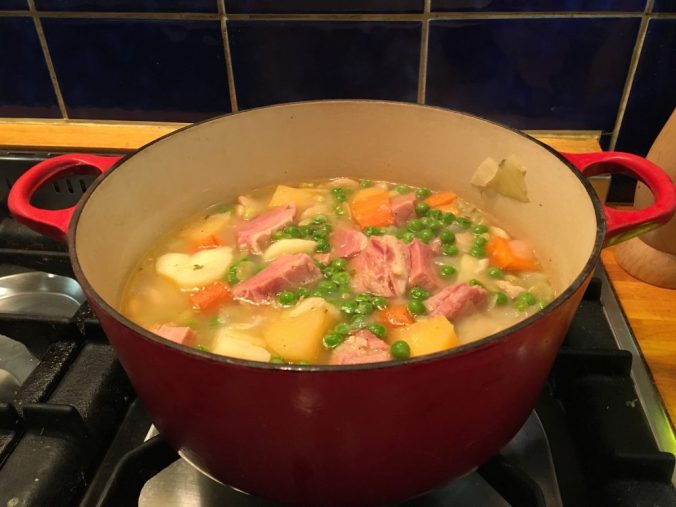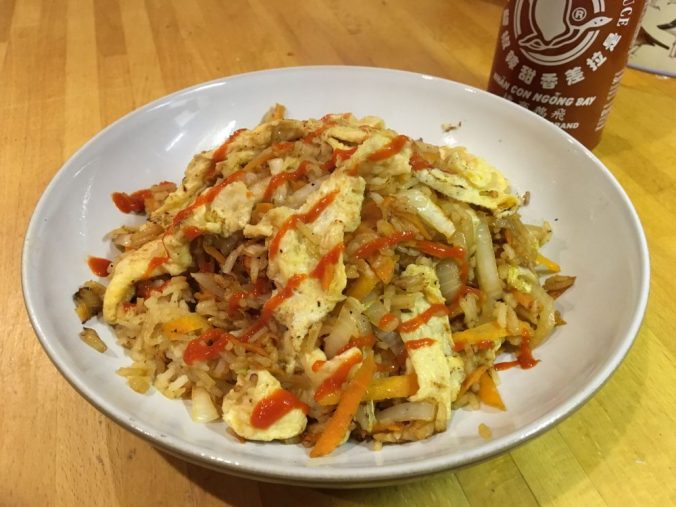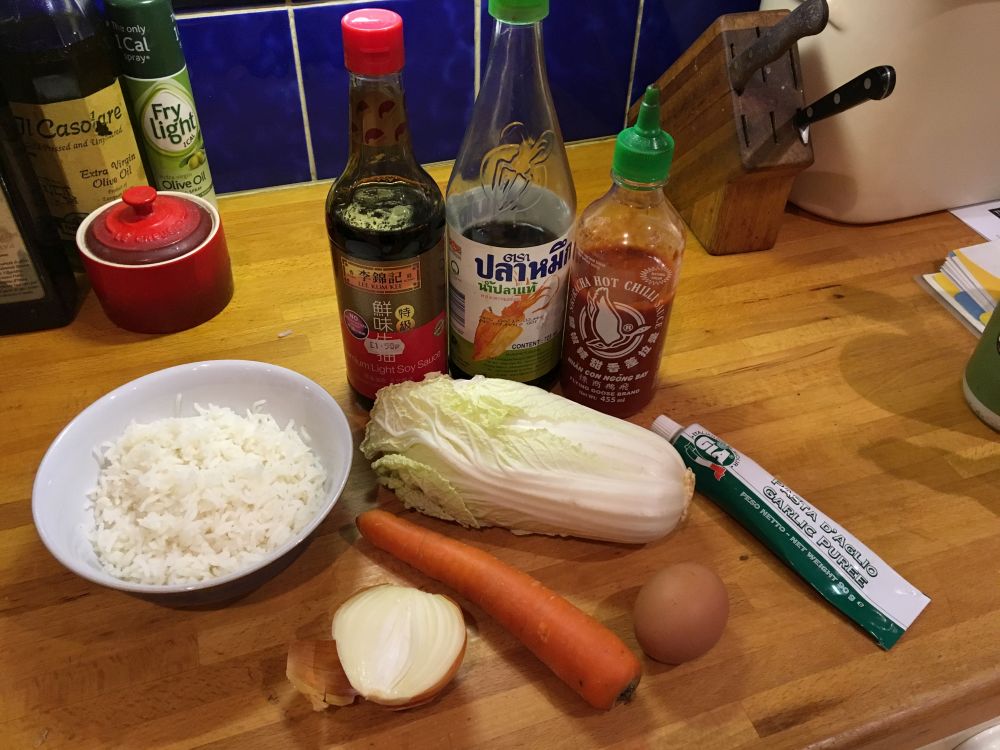Easy and quick recipes for puddings in case you need to impress someone.
Banoffee Pie
Based on a flan dish about 20cm diameter. You need (in addition to the flan dish)
– 250g packet of digestive biscuits
– 100g butter
– 4 bananas
– 300ml carton of whipping cream
– Tin of Carnation Caramel
– Chocolate to grate over
Crush the biscuits by putting three or four at a time in a plastic bag and rolling a tin over them. Melt the butter in a pan or microwave. Mix with the biscuit crumbs. Line the base of the flan tin and gently press down but not too hard or it will become an impenetrable crust. Put in the fridge for an hour to firm up. Then spread the base with the caramel. Slice the bananas and layer on top of the caramel. Whip the cream (this will be tough without an electric beater!), and blob it on the bananas. Sprinkle grated chocolate on top. (If you don’t have a grater, you can use a potato peeler). Done, and ready to eat – or chill but don’t keep it too long, a couple of days max.
Dessert in a Glass
This recipe is more a set of creative guidelines, and the options are endless. You will need drinking glasses – small tumblers or large wine glasses. Then you will create three layers.
Base layer: Crumbly. This can be based on crushed digestive biscuits, porridge oats or even Swiss-Style meuseli. Mix the crumbs with half their weight of melted butter. Layer in the bottom of the glass but don’t press down.
Middle layer: Creamy. This can be creme fraiche, plain yoghurt, or yoghurt with a spoon or two of lemon curd or seedless jam swirled through.
Top layer: Fruity. This needs to go with the flavour you have used in the middle layer (if you did), and can be rasberries, quartered grapes, chopped mango, chopped drained tinned peaches, a mixture (halves grapes, strawberries and pineapple look good (buy a lunch pot of prepared fruit if you only need a few)
Chill it to allow the base layer to go hard which won’t take long.
A slight variation on this is to use a can of rice pudding, a jar of apple sauce and blackberries. Put a layer of rice pudding as the base layer, then a layer of apple sauce, then a few blackberries, then more rice pudding, then a few more blackberries. Sprinkle brown (demera or soft brown) sugar over.
P!ss-Head Trifle
Not your nursery food version. Preferably use a glass bowl for this.
– A Swiss Roll
– Packet of rasberries
– 1 banana
– 500g ready made custard (or make a pint of thick custard and let it go cold)
– 300ml double cream
– Sherry – sweet, medium, dry, who cares.
– Toasted flaked almonds or “Hundreds and Thousands” cake sprinkles
Slice the swiss roll in 2cm slices and line the bottom of the bowl, packing closely together. Pour the sherry all over it. Delia Smith says 60ml, Olwyn uses three times that. More if you dare. Slice the banana and add as the next layer, with the rasberries. Then pour over the cold custard. Whip the cream, and layer on top of that. Decorate with the almonds, or sprinkles. Not exactly difficult! The volume of sherry makes this either kiddy food or wow! food.
Eton Mess
This is just a mixture of sliced strawberries, broken meringue and whipped cream in roughly equal quantities, stirred about to look like a mess. Mush a few of the strawberries to make it messier. It does look a mess, but tastes good. It is a British Classic recipe.







